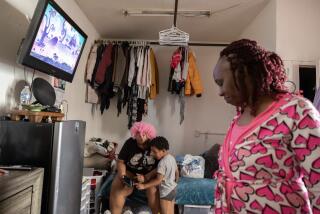Editorial: Martin Luther King, Jr. Community Hospital: A failed promise renewed
Just a few months after leading the historic voting rights march from Selma to Montgomery, Ala., the Rev. Martin Luther King Jr. arrived in Los Angeles, where the attention of the nation had shifted during six days of violence in South Los Angeles that would come to be known as the Watts riots.
“By acts of omission and commission,” King said in August 1965, “none of us in this great country has done enough to remove injustice. I therefore humbly suggest that all of us accept our responsibility for these past days of anguish.”
In Los Angeles, part of that responsibility was in leaving a vast and densely populated region of the county with inadequate services. A commission convened by Gov. Edmund G. “Pat” Brown reported that the infant mortality rate was higher and life expectancy shorter there than in the rest of the city. The closest public medical center was more than 10 miles away. The commission argued that “immediate and favorable consideration should be given to a new, comprehensively equipped hospital in this area, which is now under study by various public agencies.”
Did Los Angeles come through? Yes. And no.
County Supervisor Kenneth Hahn prodded his board colleagues to move forward with a medical center to be sited in Willowbrook, an unincorporated area adjacent to Watts. Ground was broken in 1968, the year of King’s assassination. The facility was named for him, and in 1972 opened to the community that had struggled for so long without adequate medical care.
The hospital — soon paired with Charles R. Drew University — became a source of African American pride: first-class care at a community-oriented facility, staffed by black doctors, nurses and other personnel.
The pride persisted but, as in so many other institutions intended to serve South Los Angeles, the quality did not. Racial politics blocked meaningful oversight by the county. Non-black professionals sued over losing positions and promotions based on their race. Rates of infant mortality remained higher, and life spans shorter, than in the rest of the city. The hospital became widely known as “Killer King” — and that was even before a series of high-profile patient deaths that showcased medical and managerial incompetence.
Almost alone of African American elected officials, Mark Ridley-Thomas, then in the state Senate, called for the medical center to close so that it could be rethought, restaffed and reopened. Closure came in 2007 when it failed a last-ditch inspection. Now on the Board of Supervisors, Ridley-Thomas drove the re-creation of Martin Luther King, Jr. Community Hospital, and will preside Friday over its rededication as part of a gleaming comprehensive medical campus. It is a reminder of promises made and broken in the wake of the Watts riots 50 years ago, and of an insistence that those promises be renewed.
Follow the Opinion section on Twitter @latimesopinion and Facebook
More to Read
A cure for the common opinion
Get thought-provoking perspectives with our weekly newsletter.
You may occasionally receive promotional content from the Los Angeles Times.










